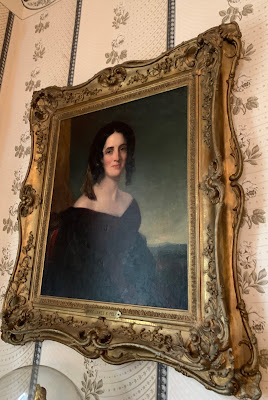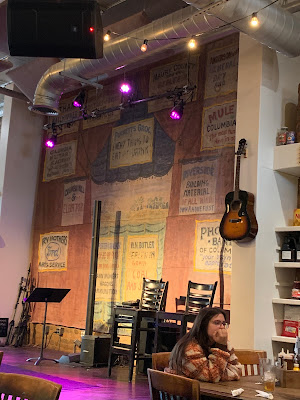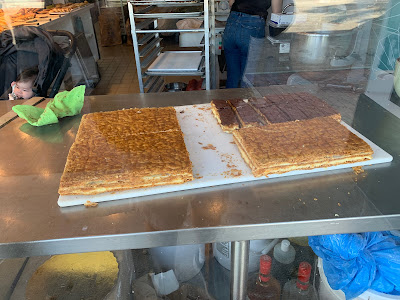After nearly three months in Florida (loved the warm weather!), it was time to move on to Tennessee. Our first stop was Columbia which is a charming area about 40 minutes south of Nashville.
Maury County Courthouse, Columbia, Tennessee
We spent a lot of our time there completing routine maintenance type issues; most importantly, the truck. Thankfully there was a Ford dealership nearby with Hertz next door so we were able to leave the truck for a few days.
We were surprised (and pleased) to learn that there was a historical point of interest - the home of President James K. Polk's parents.
This is the only surviving residence of the president other than the White House. James' father, Samuel Polk, a prosperous farmer and surveyor, built the house in 1816 while his oldest son, James, was attending the University of North Carolina. While living in his family's Columbia home, James practiced law and began his political career by successfully running for the state legislature.
Since it is the only home of James K. Polk still existing, it is a depository for the Polk furnishings, artifacts, and memorabilia, not only from the period when he lived in Columbia but throughout his life and career.
One of the best examples of Federal-style architecture in Tennessee
The parlor features White House portraits, high-style Rococco furnishings from Polk Place (the home of James and Sarah which no longer exists)......
There are several theories as to why the eagle has no white feathers. One theory is that there was no white marble available; the other is that they were depicting a young eagle who hadn't grown the white feathers yet.
"Hail to the Chief" was initially played to announce the arrival of the president during John Tyler's term as his wife, Julia, had it played as the president arrived for official events. However, it became more ritualized during James Polk's presidency when Sarah had it played for his inauguration and formal events. "Polk was not an over-the-top character; he wasn't larger than life," according to Thomas Price, curator of the Home and Museum. "Sarah Polk mentioned that on occasion he would enter crowded rooms unnoticed."
But Sarah had an idea. Thomas Price stated "Wanting to bring some fanfare to the presidency, she had 'The President's Own' Marine Band play the song so that people would know that the president had arrived."
Sarah Childress Polk played this piano. Maybe she played Hail to the Chief.
The dining room is the site of some of the most beautiful presidential china ever made. The Polks had the presidential seal embossed on all of the state china. Mrs. Polk also had different flowers and fruits painted on each piece.
James K. Polk by G.P.A. Healy, c. 1845
Polk called the fourteen hours he sat for the portrait "irksome and fatiguing"
Sarah Polk by G.P.A. Healy, c. 1845
James K. Polk once wrote "none but Sarah knew so intimately my private affairs."
The final portrait of James K. Polk shows the physical effects of the Presidency on Polk. He died three months after leaving the White House.
James K. Polk by G.P.A. Healy, c. 1848
An interesting fact about these original portraits. Yes, I said originals. When the Polks left the White House, Sarah liked the portraits so much that she had them packed up and moved to Tennessee. When the White House asked for them back, she replied no. So she had copies made and had those returned to the White House. You go, girl!
This was the bed in the room of Polk's parents, Jane Knox and Samuel Polk.
Why is it so off-centered? Maybe Samuel wasn't a great architect. Or, there is speculation that the fireplace was positioned directly across from the entrance door to the bedroom in order to facilitate the warm air to circulate into the hallway. The portrait above the fireplace is that of Jane Knox Polk, the President's mother.
A few interesting pieces throughout the house.
Sarah's rocking chair with her bag sitting on the floor.
We went outside to the kitchen which was also used as the slave quarters.
What a wonderful tour! But we'd worked up an appetite so, of course, we had to find a place to have lunch. The docent must have read our minds because without prompting, she asked us if we wanted some lunch recommendations. And we took her recommendation and found ourselves here.
Ron had quite a childhood memory when he looked at the menu.
We'd spent our two weeks in Columbia taking care of a few things (greatest Ford service department in the United States) so this was a welcome break.






















































